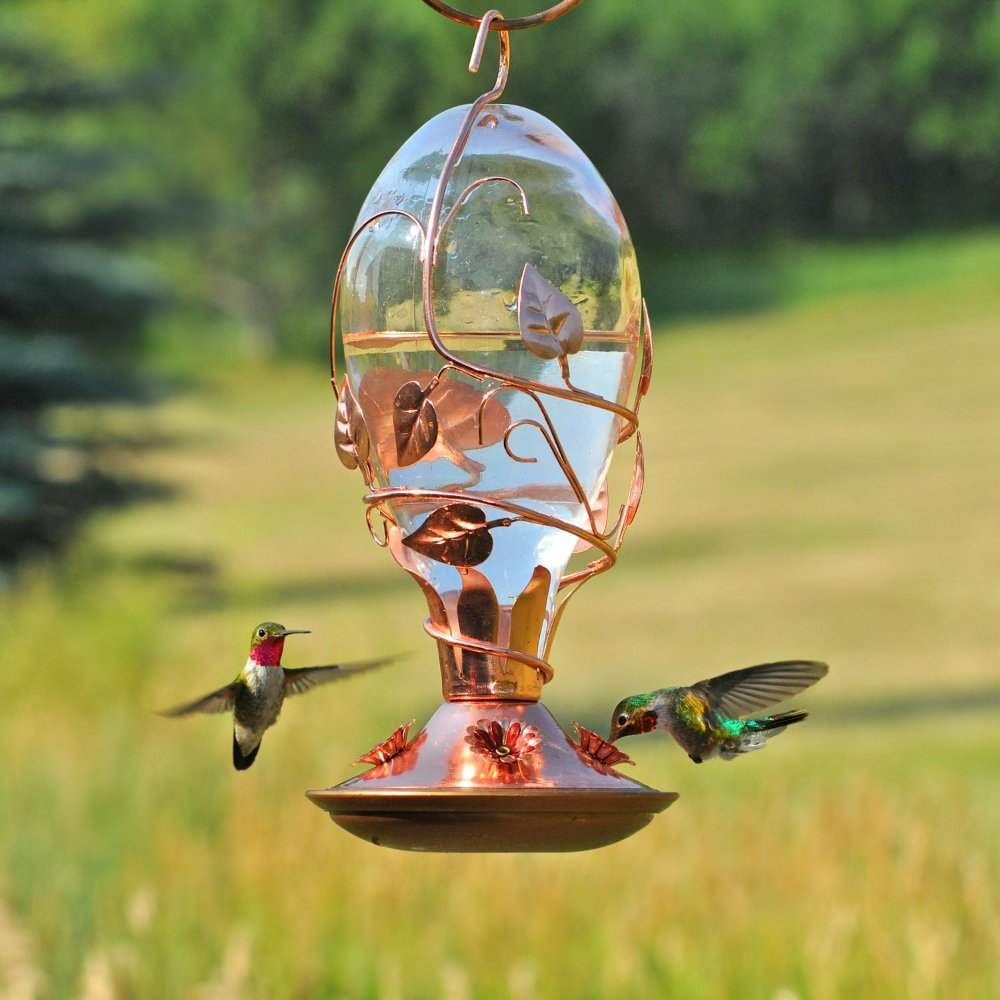It’s a common sight – dogs excitedly carrying, chewing and playing with sticks. But why are our canine companions so attracted to sticks? The appeal connects back to normal dog behavior and instincts. While fun for pups, stick chewing does carry some safety concerns. Here we explore why dogs love gnawing sticks, associated risks, and how to allow safe stick play.
Why Do Dogs Like to Chew Sticks?
Dogs have a natural instinct to chew on things, and sticks make for attractive chewing objects. Here are some of the main reasons why dogs like to chew sticks:
Oral Fixation
Chewing on sticks allows dogs to satisfy their innate need to chew and gnaw. This oral fixation develops early on as puppies and serves an important purpose. Chewing helps puppies relieve pain from incoming teeth and keeps jaws strong and teeth clean. This instinct to chew stays with dogs even as they mature.
Boredom Buster
Chewing sticks gives dogs something productive to do to pass time and work off energy. It keeps their minds engaged and distracted from boredom. Dogs that don’t get enough activity and mental stimulation are more likely to take up destructive chewing habits. Providing safe chewing outlets like sticks prevents damage to household objects.
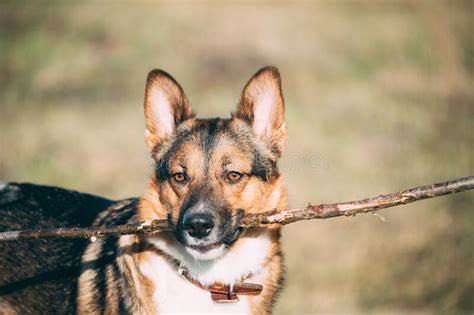
Natural Scavenging Behavior
Chewing on sticks activates the scavenging instincts in dogs. In the wild, canines spend hours hunting, foraging, and gnawing on bones. Domestic dogs retain these innate scavenging behaviors and find pleasure in seeking out items to chew, even if no food reward is involved.
Scent Exploration
Dogs experience new smells by chewing on objects like sticks. Their impressive sense of smell allows them to gather a wealth of information from the scents on sticks picked up outside. Simple chewing satisfies dogs’ curiosity and gives them novel scents to process.
Dental Health
The abrasive texture of sticks helps scrape off plaque and tartar as dogs chew. This provides a natural way for dogs to take care of their teeth and gums. Chewing also stimulates saliva production which further helps reduce bacteria and keep teeth clean.
Satisfying Texture
Dogs like the texture of wood. Chewing on sticks provides them with something hard and solid to sink their teeth into and satisfies their textural preferences. The hardness and irregular shape of sticks makes for more appealing and interactive chewing compared to typical dog chew toys.
Release of Energy
Vigorous chewing helps dogs burn pent up energy and relax. The physical act of gripping, biting, and gnawing provides an outlet for a dog’s energy reserves. Dogs are likely to seek out sticks to chew when they need to release tension or frustration.
Summary
In short, chewing on sticks appeals to a dog’s natural scavenging instincts, keeps them occupied, and provides dental and mental enrichment. Sticks are easily available outdoor chew items that give dogs an enjoyable texture and scent experience. Taking care of a dog’s innate need to chew is key, but providing safe chew options is also important.
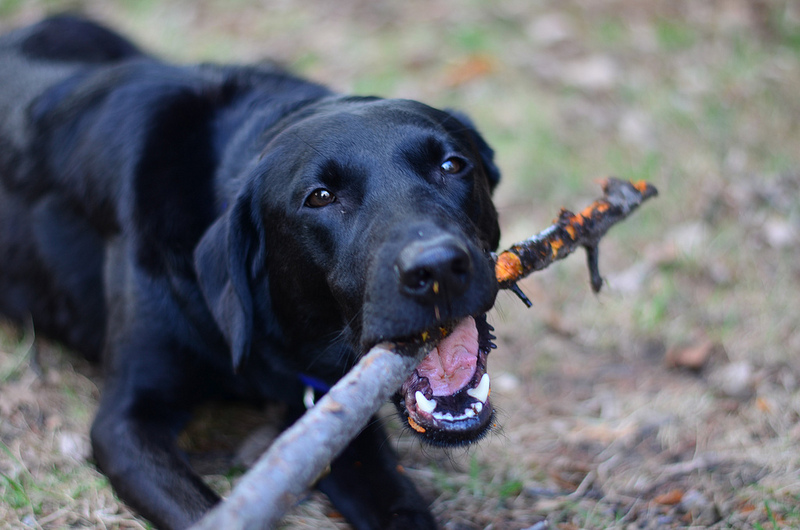
Is It Safe for Dogs to Play With Sticks?
While chewing sticks provides benefits, it also poses risks of injury. Here are some safety concerns to consider:
Splinters
Sharp splinters that break off from sticks can lodge in the mouth, throat, or stomach lining. Splinters are painful and can cause infections or obstructions. Prolonged chewing also creates sharp points that can puncture the gums, tongue, roof of mouth, or esophagus.
Blockages
Large chunks of stick swallowed by the dog may block the intestines. This can cut off blood flow and be life threatening if not treated promptly. Dogs can also choke on pieces of sticks lodged in the throat.
Dental Damage
Hard sticks can crack teeth or pull out tooth roots. Aggressive chewing of sticks can lead to dental fractures over time. Sticks get abrasive with moisture, so wet chewing erodes tooth enamel.
Pesticides
Sticks found outside may be contaminated with chemicals like pesticides or fertilizers that could make a dog sick. Bacteria, mold, insects, and parasites on sticks also pose illness risks.
Mouth Injuries
Sharp sticks can lacerate the tongue, gums, cheeks or mouth lining. Using sticks as fetch toys increases risk of stick-induced mouth injuries. Sticks thrown with force can impale the roof of the dog’s mouth.
GI Tract Obstruction
Swallowing long, stringy pieces of bark detached from sticks can wrap around the base of the tongue or block intestines. Bark also splinters easier than wood.
Summary
Despite their appeal to dogs, sticks can easily cause pain and injury when chewed or swallowed. Supervision is key, and removing sticks immediately after active chewing is safest. There are safer chew alternatives to satisfy a dog’s needs without the risks sticks present.
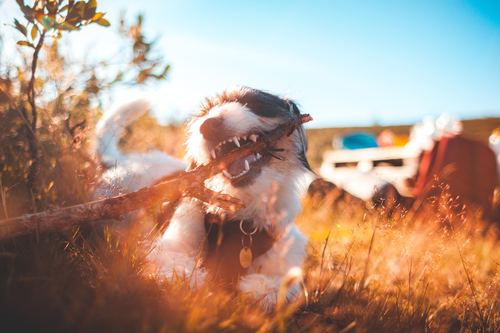
Should Dogs Be Stopped from Chewing Sticks?
Chewing sticks is a high risk activity for dogs that is best avoided. Here are reasons it’s important to stop the behavior:
Prevent Injuries
The main reason to keep dogs from chewing sticks is to protect them from splinters, mouth lacerations, broken teeth, and obstructions. No stick is 100% safe, so removing access prevents harm.
Ensure Proper Nutrition
Dogs on a balanced diet do not need to chew sticks. The small nutritional benefit does not outweigh safety concerns. Stopping stick chewing encourages dogs to eat a healthy diet.
Limit Spread of Disease
Sticks can transmit viruses, bacteria, parasites, and fungi. Removing sticks helps keep dogs from contracting contagious diseases. This protects their health and prevents spreading illness to humans or other pets.
Prevent Destructive Habits
Allowing inappropriate chewing on sticks can lead to destructive habits. Dogs begin chewing furniture, shoes, etc. Redirecting to appropriate toys is better than allowing potentially dangerous chewing.
Supervision Challenges
It’s unrealistic to constantly watch a dog outside to intervene with sticks. Eliminating access altogether is more practical than trying to monitor and restrict stick chewing.
Vet Recommendations
Veterinarians overwhelmingly recommend preventing dogs from chewing sticks to avoid foreign body obstructions. Following a vet’s professional advice is wise.
Reduce Risk
Simply put, stick chewing carries real injury risks. Removing sticks altogether is the only way to fully protect dogs. Chewing enrichment can be provided much more safely through appropriate toys.
Summary
The dangers of stick chewing far outweigh any benefits for dogs. Supervision, redirection, and restricting access are needed to keep dogs safe. Vets concur that preventing stick chewing is the right choice for dog health and safety.

How to Stop Dogs from Chewing Sticks
Stopping a dog’s stick chewing habit takes effort but is well worth it for their protection. Here are effective approaches:
Keep Yard Clear
Daily removal of fallen sticks from the yard is key. Check for any sticks dogs can reach through fences. Walking on leash prevents scavenging sticks on neighborhood walks.
Use Baby Gates
Limit access to rooms or the yard when unsupervised. Close off areas so dogs can’t get sticks while you are away. Baby gates or crate training prevents wandering.
Redirect Attention
When you catch a dog with a stick, offer an enticing chew toy as a trade and reward with praise. Over time the dog will learn to seek out appropriate items instead.
Correct Correctly
If the dog has a stick in their mouth, give a firm “no” or “drop it”. Avoid pulling it from their mouth as this can cause dental or mouth injury. Pry sticks, don’t tug forcefully.
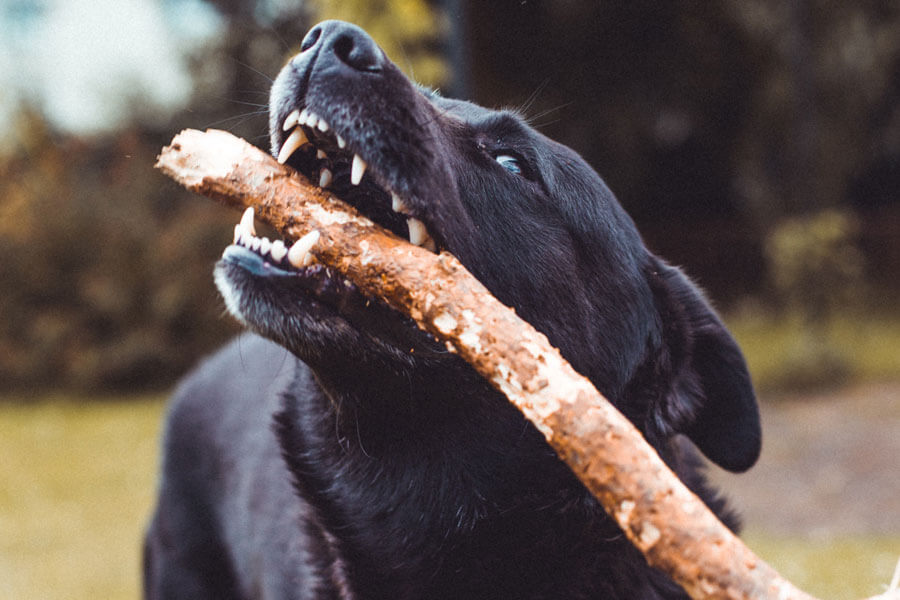
Increase Exercise
Make sure the dog gets adequate walks, playtime, and enrichment. Meeting their needs with safe outlets can curb the drive to chew sticks. Interactive feeding puzzles keep dogs engaged.
Use Bitter Sprays
Applying bitter apple, bitter lime, or other deterrent sprays to sticks helps make them unappealing. Reapply frequently when dogs test if the bitterness remains.
Visit the Vet
If excessive scavenging persists, check with your vet for solutions. Anxiety, nutritional deficiency, or other issues could be causing obsessive chewing habits.
Remove Temptation
Take walks in lower risk areas without sticks. Avoid dog parks with stick hazards. Pick up sticks in your neighborhood to limit temptation.
Supply Safer Chews
Providing tempting and stimulating chew toys offers a safe alternative when their chewing urge strikes. Durable rubber, rope toys, or dental chews can satisfy chewing needs.
Summary
Preventing access, redirecting behavior, and addressing underlying causes of stick chewing allows you to break the habit while keeping your dog’s enrichment needs met. With patience and consistency, you can train your dog to happily play with safe toys instead of dangerous sticks.


